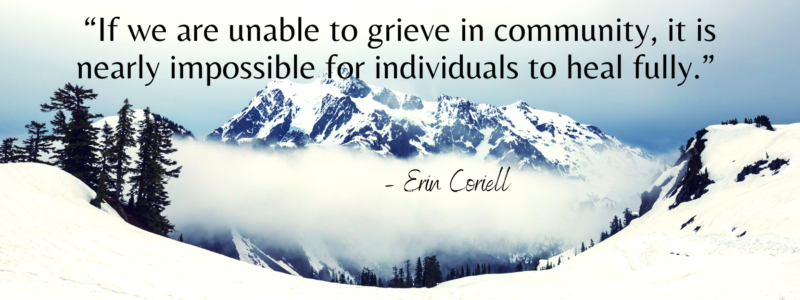A Crash Course in Surviving Divorce – Part II

Community is Key
Divorce involves grieving, and many people have told me that the grieving they feel during divorce feels as heavy as grieving the death of a loved one. It IS, after all, the death of your marriage, the death of a promise and the end of your family as originally conceived.
Throughout history, communities have performed ceremonies and rituals when one of their own was grieving a loss. These rituals were often held publicly, with an open acknowledgment of the pain and sadness felt by the one(s) experiencing the loss. In Western culture, these rituals along with the raw emotions are often hushed up and relegated to the privacy of your home and a timeline. There’s a kind of shame connected with public displays of sadness and pressure to silence the harsh reality that grief is part of life. This leads to many unhealthy conditions in mind, body, and spirit and can present in harmful practices because the silent, unacknowledged grief was forced underground.
Being part of a community that allows open expression of grief is important for health and well-being. However, finding a community that can comfort and encourage you through the process is not easy. The Divorce Recovery Center, and others like it, are good examples of groups created to foster support, connection, and bonding. When you have a safe space to discuss unresolved feelings, camaraderie and connections naturally develop as does empathy and understanding. The bonding that occurs when painful experiences are shared often develops into friendships that last a lifetime.
I strongly believe that for deep healing it is important to build multiple layers of support for yourself. Lean on people you know and trust, especially supportive family members and close friends. If you feel comfortable, ask them to check in on you and let them know what you need from them. Confide and cry with trusted companions or family members. Connect with your support group in a meaningful way. Invest in church or social communities or strengthen connections at a gym or swimming club, etc. Reach out to co-workers, neighbors and acquaintances for walks, hikes, or community sporting events. Truly cultivate your relationships so you can create the level of connection that works for you. Simply being around people, having conversations and staying plugged into life offers multiple layers of healing, as well.
It’s also wise to seek professional help. Having an unbiased therapist who is not connected to your grief can be extremely helpful. Your counselor can help you analyze your situation without personal bias, encourage you to set boundaries and goals, and help you to process grief and soften raw feelings.
In conclusion, by building layers of community for yourself, you’ll develop a personalized safety net and life support system that will carry you through the grief process. Surrounding yourself with caring people on every side enables you to find the courage to feel emotions fully, then incorporate them into a deeper, wiser version of yourself, and finally release them. In time, the grip that sadness had on your life will loosen, and acceptance and well-being will most likely follow. If the emotions are felt, honored, and released, the next natural step is a renewed sense of excitement in life, with hope for all the possibilities that tomorrow holds.
